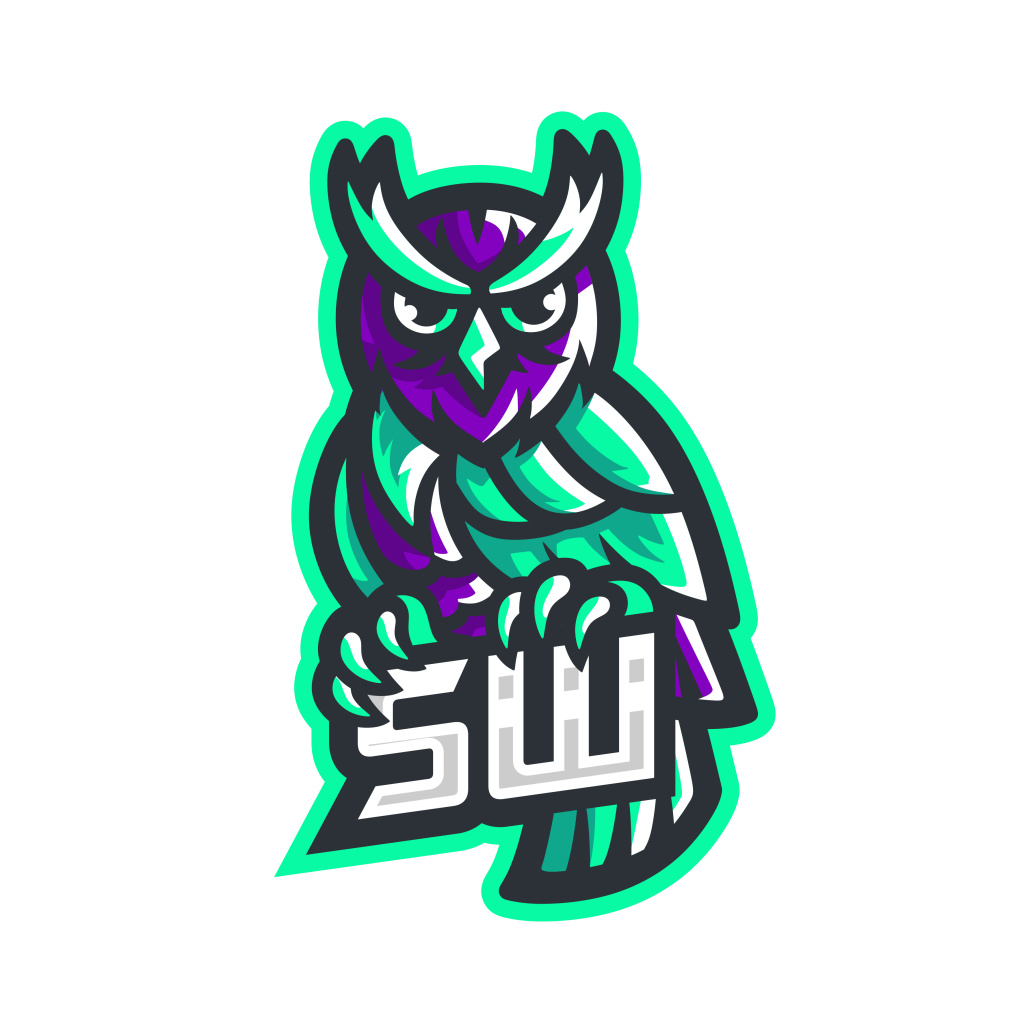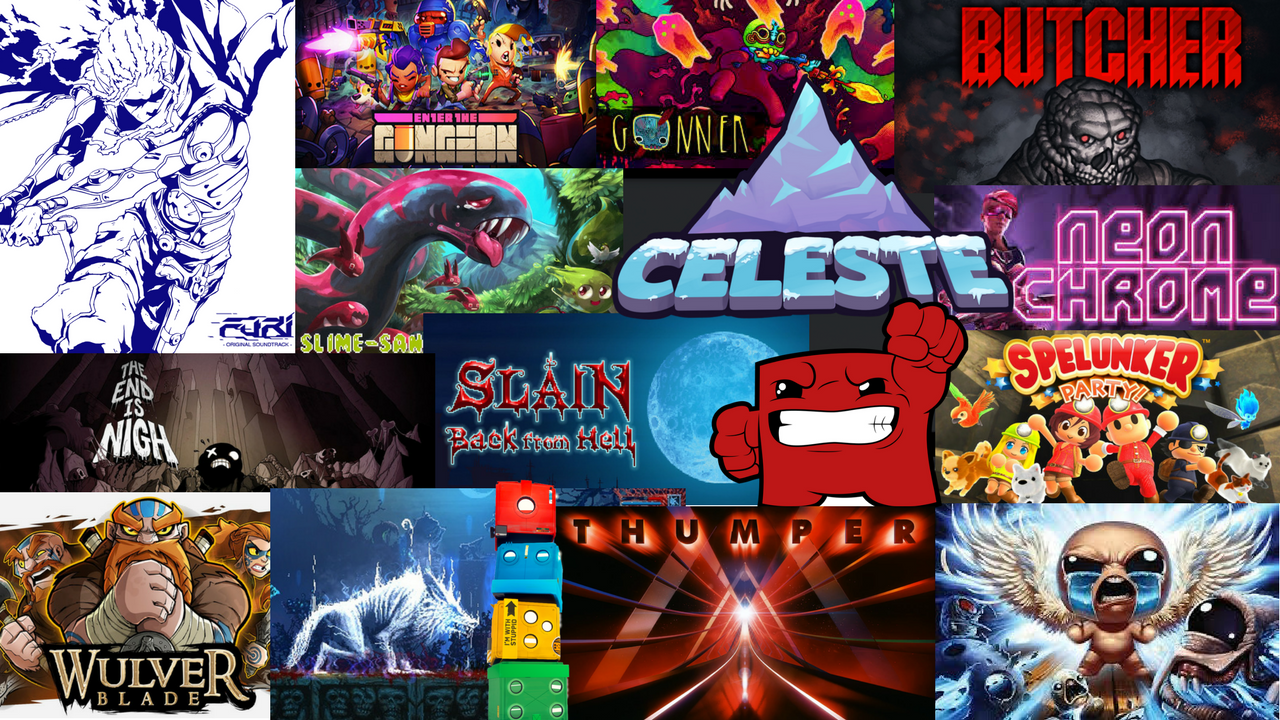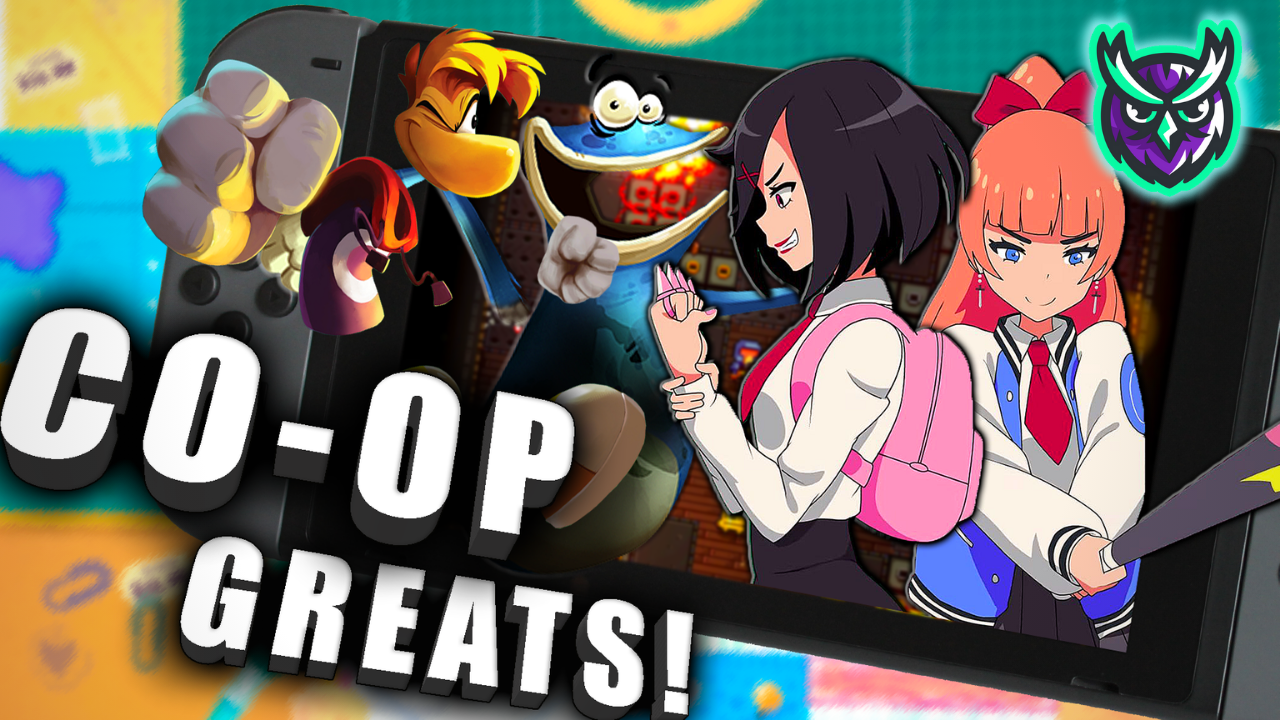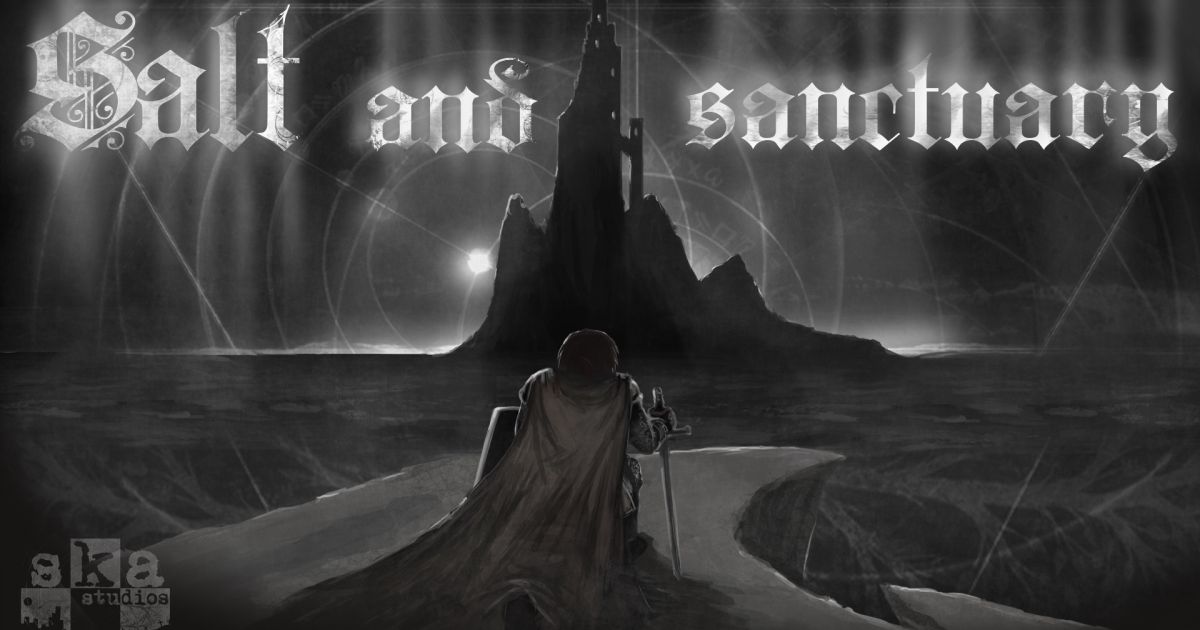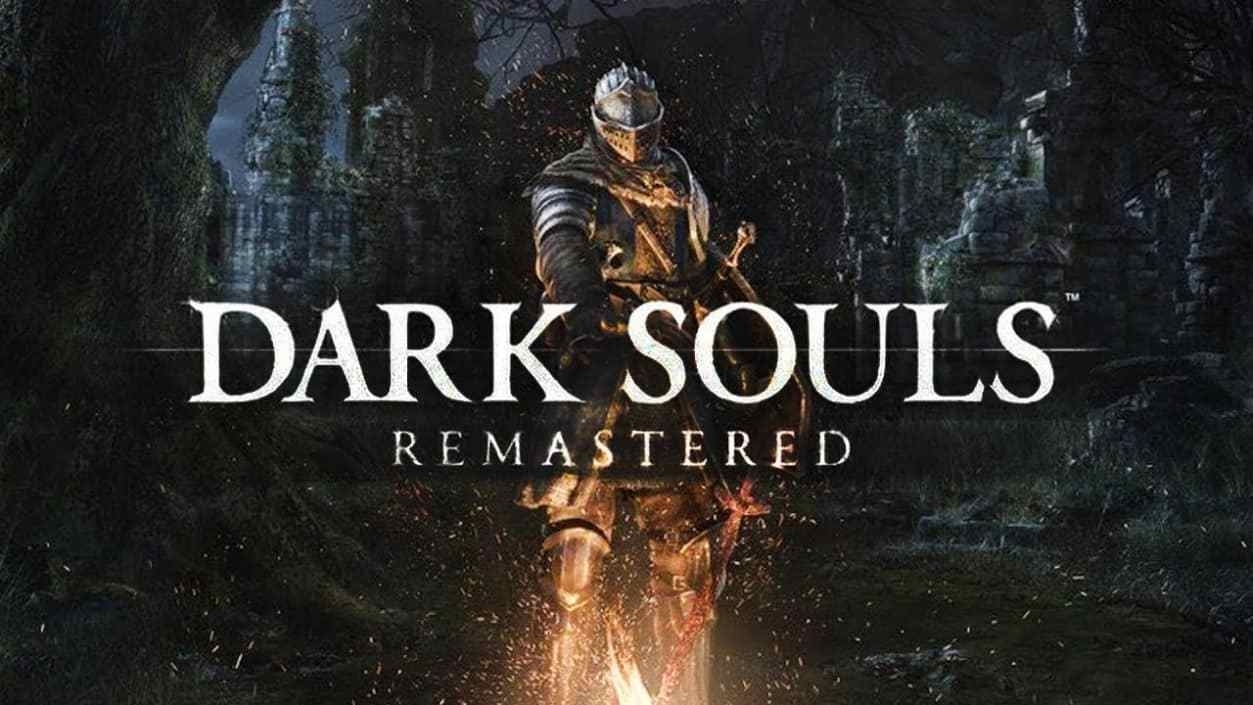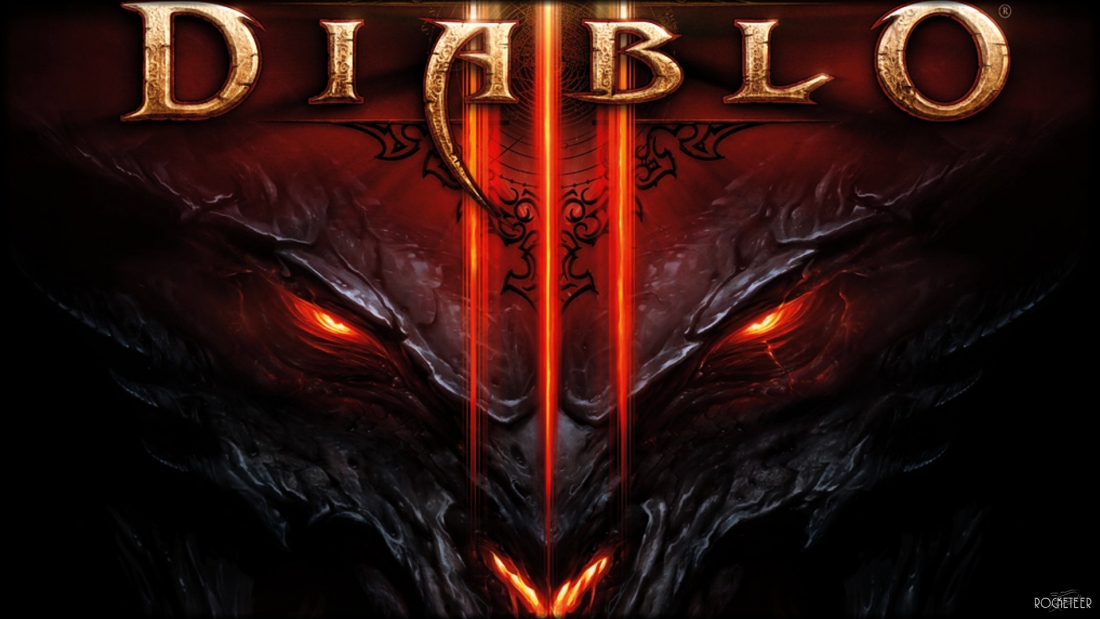Salt and Sanctuary Nintendo Switch Review by SwitchWatch
Developer: Ska Studios
Publisher: Ska Studios
Release Date: August 2nd 2018
Price as of Article: $17.99 USD, £13.59 GBP
The story begins with your character on a boat that is attacked by monsters. Making your way towards the princess that was on the ship, you are confronted by a giant beast that sinks the ship, and you wash ashore a mysterious island. It is from this point that you adventure forth hoping to find the princess and rescue her, but this island is a very dangerous place.
As far as the story goes, it is very minimal. Aside from the opening moments of the game, most of the story beats are told via cryptic conversations with the few NPCs you meet along the way. Even then, it seems halfway through that the game completely forgets the opening moments entirely with the later half of the game seemingly being a completely different story told in the same setting.
Thankfully the story isn’t important to Salt and Sanctuary at all, and aims to be nothing more than a reason to move you towards the end of the game.
Style and controls
This is where Salt and Sanctuary really shines. The easiest way to describe it would be that the game is essentially a 2D Dark Souls, but it is so much more than that. There is a lot of precise platforming sections that make this feel like a fleshed-out 2D platformer, but the action and combat make it more than just a simple platformer. Add in a healthy dose of RPG mechanics, and this game is a lot more than simply a 2D Dark Souls.
First off, let’s talk about the controls. You begin the game being able to do the simple stuff such as walking, jumping and attacking. There is also a roll which I will discuss a little later in the combat section. Later on in the game, you will unlock some new ways to traverse through the world which are tied to brands that certain NPCs will give you. These brands will allow you to wall jump and add an air dash, among other things.

Combat
These controls seem simple at first, but when you get into combat you begin to see how complex things can get. Combat revolves around reading enemy patterns, picking your moments to strike, and dodging enemy attacks. Every enemy has a range of attacks it can do, each with a unique sign that will allow you to read an enemy’s attack patterns and react appropriately.
Avoiding an enemy’s attacks can be as simple as moving out of their range or as complex as rolling through it. Rolling itself is a very useful move in combat as you are invincible throughout the rolling motion. Those moments of invincibility allows you to roll through an attack if you time it correctly. You can also roll through enemies which can get you behind your attacker, and this will open them up for a few strikes before they turn around to return fire.
“If I had to sum up the combat as a whole, I would say that it is slow and deliberate”
As you unlock the new traversal moves, you can also add some unique ways of dodging an enemy’s strike. I found myself during boss battles using the wall jump and air dash together to avoid attacks and jump over a boss as well as to get behind them. Take advantage of that opening to get in some quick damage.
If I had to sum up the combat as a whole, I would say that it is slow and deliberate. You may have to wait for openings to attack your foes, but doing so is extremely satisfying. Though it can be frustrating at times, you will feel like the deaths you endure were from your own mistakes, and never from the game cheating you… well for the most part.
Cheap tricks
There were two moments in the game where it felt extremely cheap and added unnecessary frustration. One area has you fighting invisible enemies which, as you can imagine, feels rather unfair. They are simple enough enemies to dispatch, but being unable to see them, to know where they are, or even read their attack patterns just feels like terrible game design in a game whose combat is centered around reading your enemies’ attacks.
The second moment of cheapness comes from the final boss. To enter the final boss chamber, you must drop down off a high ledge, meaning you take fall damage before you even get to fight the boss. This gives you a feeling of being cheated out of some of your health bar, and considering this game punishes you by reducing your maximum health bar every time you take damage, it just feels incredibly cheap. The game is perfect at creating a difficult experience without these terrible tricks, so it is very disappointing that the developers added these unnecessary moments at all.

Platforming
As far as Salt and Sanctuary’s platforming is concerned, it is top notch. Controlling your character’s movements is very responsive allowing you enough in-air control to make all the jumps you need to. There are some jumps that require a level of precision such as jumping right at the end of a platform, but these harder-to-make jumps are generally relegated to secret areas that hide some hidden treasures.
If you aren’t that great at platforming, the game does give you a helping hand. There is a rather generous ledge grab, which will allow you to pull yourself onto a platform if you fall a little short. Getting access to the air-dash also helps a lot with any platforming woes you may have. In general, the layout of each area is done in such a way that traversing through the world is fun rather than frustratingly difficult (they leave that up to the enemies).

Character Leveling
There is a rather robust leveling system to be found in Salt and Sanctuary allowing a high level of customisation. Killing enemies gives you salt which you can then cash in at a shrine to level up your character. When you level up, you gain a point for each level you go up which can be used on a massive skill tree. This skill tree is where you can really flesh out your play style. If you want to be an archer, you can start adding skills that lead towards the abilities which allow you to wield higher level bows. Want to use magic? Then start adding skills that lead to you being able to cast more potent spells.
Beyond being able to wield stronger weapons and magical abilities, you can also increase your base stats such as strength, stamina, dexterity etc. These stats help determine the strength of your weapons. Just say you want to use a whip, then it is recommended that you level up your dexterity as it is a dexterity-based weapon. Want to get stronger with two-handed weapons? Then start leveling up your strength.
“This skill tree is where you can really flesh out your play style”
You can also increase how much weight you are able to carry. Don’t worry. This isn’t an over encumbrance issue like with The Elder Scrolls. The weight system works much the same as in Dark Souls; you have a maximum weight you can equip before you can barely move. The less you weigh, the quicker you move, and the better you roll.
Weapon and Armour Customisation
Besides your own character, you can also level up your weapons and armour, and the results of it are quite obvious. The more you level up your weapon, the higher your damage output will be. As for armour, the higher its level grows, then the higher your defence gets.
The further you get into your journey, you can begin to transmute weapons and armour which allows you to essentially exchange what you transmute into something more powerful. For example, I exchanged my scythe for a much more powerful one. Transmuting a weapon does lower its level by one though, so my level VI Warscythe was exchanged for another scythe at level V.

Salt and Sanctuary
I touched on how salt is used to level up, but that is just scratching the surface of what the salt system is in this game. Salt is almost identical to how souls work in the Dark Souls series. Killing enemies nets you salt which is used as a way to level up not just your player level but also your weapon and armour level along with being used as a currency with specific vendors. You do get money, but that is mainly used to buy items with salt being the main currency for upgrades.
Speaking of vendors, you find most shops at the many sanctuaries scattered throughout the world. The shops and their vendors generally aren’t just there and ready for you. Many sanctuaries are empty with you claiming it for the faith you have chosen to follow. If you want to then add vendors to your sanctuary, you have to make an offering of a small idol. There are eight different idols you can find, and each one brings with it a specific shop. Each sanctuary can only have four idols offered to it, so choose which idols you offer wisely.
“The sanctuaries are where the game autosaves, allowing you to finally turn the game off when you need to”
Shops aren’t the only thing idols give you. Idols also give you an upgrade for the area the sanctuary is located. Some idols grant you more gold or salt per enemy kill, increase item drop rates, or even increase your attack damage and blocking efficiency. This can make you think twice about using certain idols in the starting areas as you may want as much extra damage as you could get for a late game area.
Sanctuaries are more than just a shop hub though. The sanctuaries are where the game autosaves allowing you to finally turn the game off when you need to. It is also where you level up your character, heal yourself back to full health, and replenish your health potions. Praying at a shrine isn’t all good though as doing so will also revive all the enemies you have defeated, excluding bosses (and, inexplicably, one early-area knight).
The health and stamina penalty
Taking damage in Salt and Sanctuary does incur quite a steep penalty over time. Besides the obvious downfall of having less health, your maximum health also takes a hit. This means that when you drink a health potion after taking damage, you will have a lower max health stat than when you initially left a sanctuary.
Your overall stamina can take a hit, too, especially if you are a spell user. Stamina is used as a pseudo mana bar, so the more spells you use, the lower it gets. The problem is, to avoid prevent you from spamming spells, it actually lowers your overall stamina bar, rather than just taking stamina out of your pool that can be replenished. This means that if you use too many spells, you will no longer be able to roll, limiting your ability to dodge enemy attacks. Because of this I tended to steer clear of spells, so I cannot confirm if using staves, wands or leveling towards a magic user would lessen the stamina drain effects overall.

New Game +
After finishing the game, you can begin again with a new game plus mode. When you begin, you will find that you do not play through the story intro again, instead beginning from when you awaken on the shore of the island. You also have all of the items you had from your last play through as well as a new set of armour. The level of your character, weapons and armour all carry over as well.
Don’t get the wrong idea, though. The game is anything but a cakewalk your second time through. You will find that the basic enemies you could kill with a single blow in your first run now take three shots, and they hit a lot harder. Basically, you feel like you did when you first started the game, except this time you need a lot more salt to level up, making the whole game from start to finish a lot harder.
“You will find that the basic enemies you could kill with a single blow in your first run now take three shots, and hit a lot harder”
The one thing that doesn’t carry over are your brands. Because of this, you no longer have access to your wall jump or air-dash, among other upgrades. This is clearly done to prevent you from reaching late game areas from the get go, forcing you to play through the entire game again which is smart. Unfortunately, this means that if you used those late game traversal moves during combat, you will have to forget that muscle memory you built up to beat those late game bosses.
One more thing
There was one thing I found to be rather strange whilst playing the game. The in-game play timer is completely busted if you ever use sleep mode. When you put your Switch to sleep, it does indeed pause the game – which is the only way you can pause the game – but the in-game timer keeps ticking along. This means that if you want an accurate measure of your overall play-time, then you will have to make sure to quit the game rather than put it to sleep. It is a minor issue, but one that some may be concerned with.
Music is used sparingly in Salt and Sanctuary. For the most part, adventuring through the world is completely void of music, leaving you with nothing but the groans and shrieks of enemy monsters, the clashing and slashing of weapons, and the sounds of tearing flesh and blood pouring upon the floor. The sounds are scary, disgusting, and creates a sense of tension and anxiety that few other games can truly capture.
When the music does kick in, it is usually to highlight a fearsome boss creature. You will hear a choir and intense synth that is both beautiful and frightening. Because music is used so sparingly, having the music start belting out through your speakers or headset in these boss battles adds a level of intensity and purpose to the fight.
“…adventuring through the world is completely void of music, leaving you with nothing but the groans and shrieks of enemy monsters, the clashing and slashing of weapons, and the sounds of tearing flesh and blood pouring upon the floor”
The other moment you will hear music is when you are revisiting an area you have already completed. There is more of a triumphant air to the track used in these moments, and it helps to add some fun to slaying the now easy to kill beasts of these early parts of the game.
The visuals here are hauntingly stunning. Artistically speaking, the style used here is somewhat cartoonish, but by no means do I mean that in a derogatory way. Characters have a drawn look about them, mirroring what you would expect from an adult-style cartoon animation. Enemies are still fearsome to behold, and each character has an underlying menace to them which I feel means they have succeeded in creating a distinctive style.
Colours are dark and muted often with areas lit by nothing but the flame of a torch. There is a lot of fog and shadow used to limit vision in a way that is masterful, and this manages to strike fear into the unknown by showing you as little as possible. When you are outside and can see the whole screen, what you see before you is beautifully decrepit and gives you the feeling this place is somewhere you do not want to be.
Each of the worlds areas are distinctive from one another, allowing you to know where in the world you are just by looking at the assets used. Even the underground areas have a different look from each other which helps in navigating where you need to go.

As for the performance, there are unfortunately quite a few issues this Switch port has. Although the game runs smoothly for the most part, there are a few areas where the game will stutter and drop frames. It got so bad during one particular boss battle that the game stopped recognising inputs hampering my ability to capitalise on openings. Luckily, it was one of the easier bosses in the game, but a performance issue this bad could prevent someone from progressing, and this boss was only halfway through the game.
Also, after defeating the final boss, I marched forth towards the end of the game. As the final cutscene began, it stuttered quite severely, until it eventually crashed and sent me back to the Switch home screen. Upon reloading my save, it didn’t save my progress after defeating the final boss forcing me to replay that final battle before I could hit new game plus. When the game did let me view the final cutscene, it still stuttered like crazy.
Straight up, Salt and Sanctuary is well and truly worth your hard-earned cash. The game is by far my favourite that I have played this year on the Switch, and is a true 2D action masterpiece. If you are a fan of 2D platforming, games with RPG elements, or even the Dark Souls franchise, then definitely give this game a try. The low price of entry is well and truly worth the investment.
Pros
Exquisite gameplay
Tight controls
Deep mechanics
Varied level of customisation
Brilliant use of music
Visuals are beautifully harrowing
Cons
Performance issues
